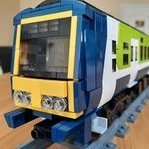Sign in to follow this
Followers
0

[MOC] GWR Olton Hall (Hogwarts Castle)
By
EWay, in LEGO Train Tech
-
Recently Browsing 0 members
No registered users viewing this page.

By
EWay, in LEGO Train Tech
No registered users viewing this page.